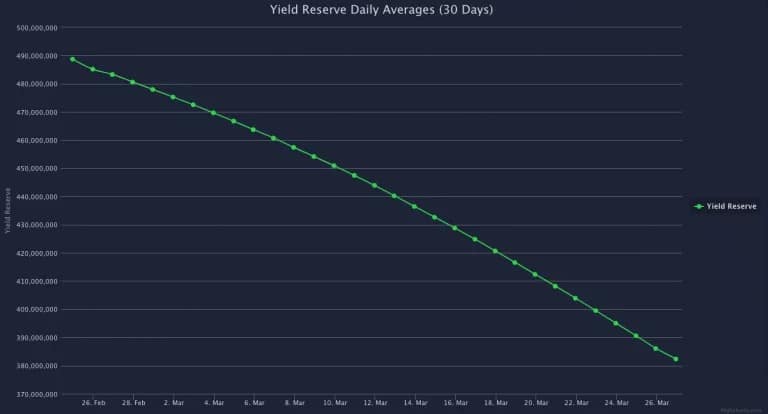The Anchor Protocol (ANC) is adopting a proposal that could reduce the rate of return (APY) on TerraUSD stablecoin deposits (UST). The aim is to make returns more sustainable over the long term.
Success of Anchor protocol
Anchor, a decentralised lending protocol, has been a huge success in recent months. Returns of 19.5% APY are on the lips of decentralised finance (DeFi) enthusiasts.
According to DeFi Llama, $14.37 billion is locked on Anchor, this represents over 53% of the total value locked (TVL) on the Terra blockchain (LUNA). This figure makes Anchor the largest DeFi protocol in terms of TVL in the Terra ecosystem and the fourth largest interblockchain protocol.
This puts Anchor behind Curve’s $20 billion in TVL (CRV), MakerDAO’s $17 billion (MKR) and the Lido protocol’s $16 billion (LDO).
Much of the success of the Anchor protocol is due to the TerraUSD (UST) stablecoin, which currently yields 19.49% per year on UST deposits.
Terraform Labs, Terra’s parent company, had to inject $1.1 billion in the form of LUNA tokens into its reserves in response to the growing success of the UST stablecoin. This is because the protocol uses a reserve to subsidise returns.
Many cryptocurrency investors have criticised this approach. Critics have warned that it could trigger a death spiral for LUNA if the stablecoin loses its footing. In addition, Anchor is also criticised for subsidising returns so much that it is not sustainable in the long term.
Introduction of a dynamic return mechanism
In response to these criticisms, a proposal to gradually reduce the rate of return was submitted to the Anchor Governance Forum on 25 February. It was officially put to the vote on Thursday 24 March and adopted.
To start with, the frequency of rate adjustment will be 1 month, which means that each month the protocol will adjust the rate of return according to the state of the reserve.

Anchor protocol reserve (Source: Mirror Tracker)
The cap on rate adjustments is set at 1.5%, so it can go up or down by a maximum of 1.5% each month. The rate adjustments will be positive or negative depending on whether the yield reserve has appreciated or depreciated during the month.
In practice, if the reserve decreases in April, the first rate change will be a reduction of 1.5% on 1 May to 18% (19.5 – 1.5). The proposal states:
“It is time to focus on the sustainability of the protocol by reducing the overall return earned by depositors”.
